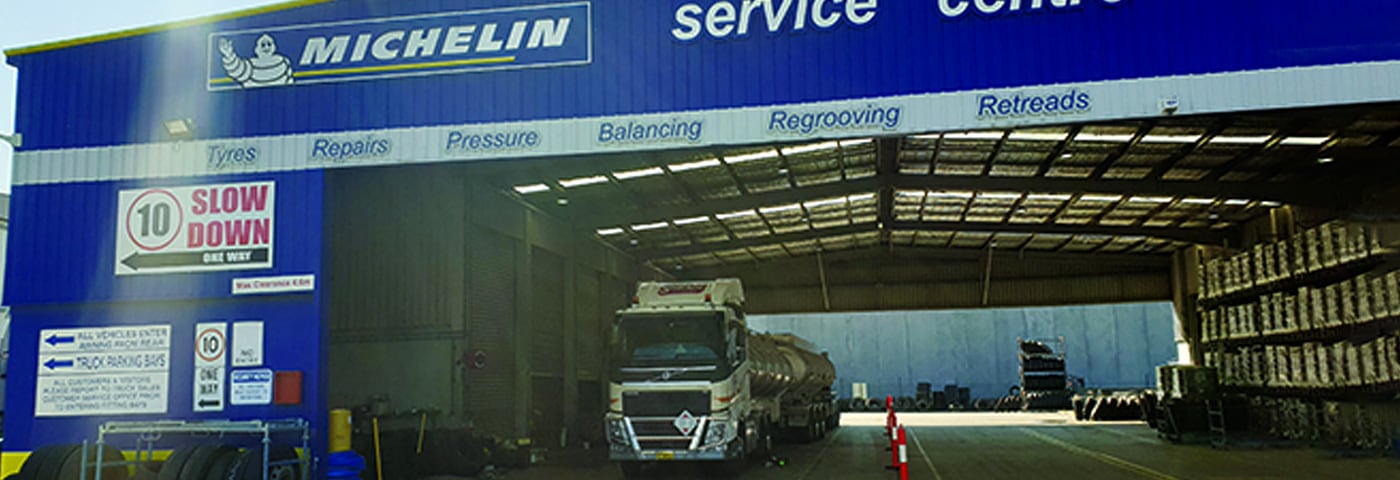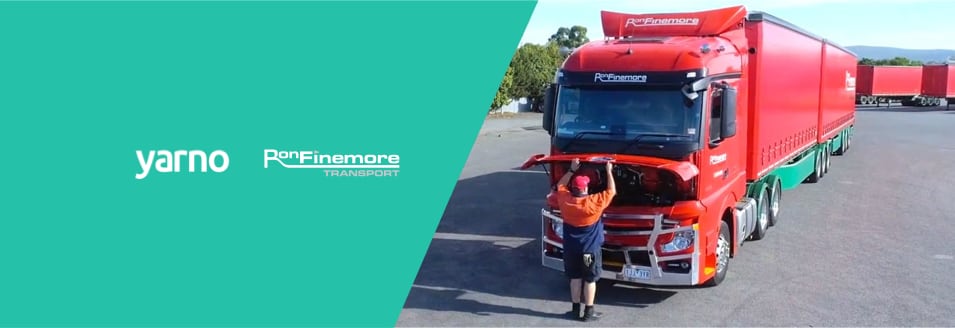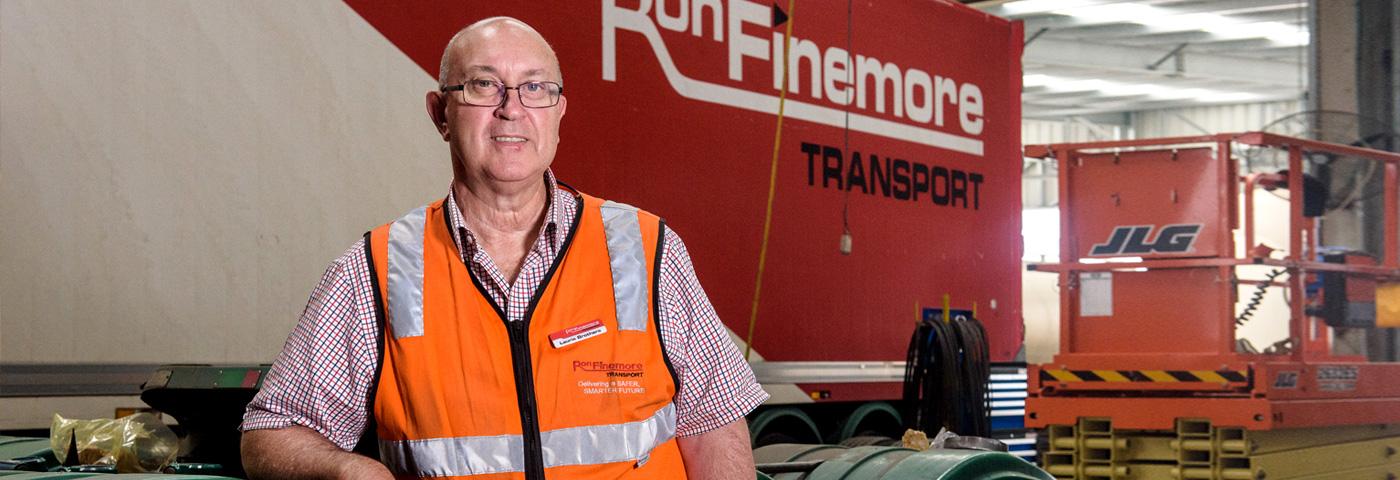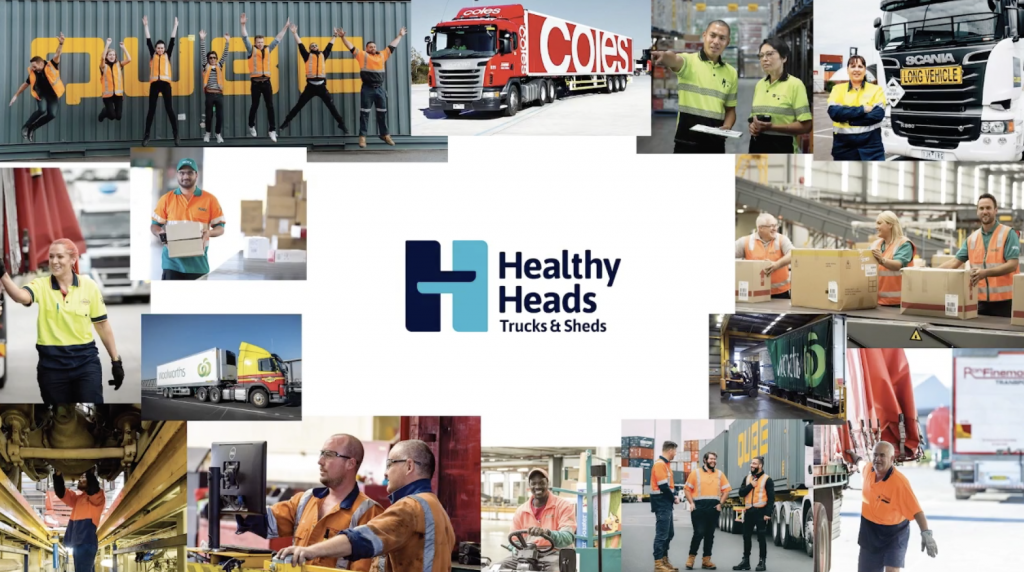Ron Finemore Transport Partners with Michelin on Retreads

Multi-life tyre technology plays a major role in the operations of Ron Finemore Transport. As it sees real value in tyre cases, the freight company partners with Michelin on its retreads to chase further gains in total cost of ownership while reducing its environmental impact.
Tyres after fuel and wages are one of the biggest cost considerations for Australian road transport operators.
As Michelin tyres are designed to perform for over a million kilometres, multi-life customers of the tyre specialist recognise that it’s the quality of the case, rather than the tread that can determine a value for money investment.
Retread rubber, after all, is the same rubber compound used on new tyres.
By investing in tier one tyres, companies like Ron Finemore Transport are seeing cost benefits while reducing the use of oil and scrap metal, which although more expensive at the point of purchase, save as much as half the cost of a new tyre through the use of retreads over its life.
A retread, according to Michelin, uses 20 litres of oil whereas a new tyre might contain as much as 80 litres.
Using up to 50 per cent less raw materials than newly purchased tyres, retreaded tyres are not only considered better for the environment, but they are covered by OEM warranty and safe for the hauling of fuel tankers and other dangerous goods.
It’s the casing itself where the bulk of the construction in a new tyre is found.
The rubber tread, while still complex in design, is the final component that wears out.
According to Matt Backhouse, Michelin Retreading and Service Centre General Manager Derrimut, a case from a major brand like Michelin is preferential as it will contain stronger steel in the construction of the bead, the part that sits on the edge of the wheel.
“Certain tyres we prefer simply because of the construction of the tyre in the bead. It will feature thicker rubber in the side wall and belt construction in the crown far greater than that of a cheaper imported tyre,” Matt says. “To get a cheaper tyre they actually remove some components from it whether it’s using a cheaper rubber or chemical compound, inferior carbon or steel and that can compromise the density of the rubber and the thickness of the chemical compound. What they are doing is taking away the structural integrity of the tyre.”
Any number of Michelin’s truck tyres have the capacity to be retreaded making it an attractive partner for Ron Finemore, who has been actively engaged in using retreads since the early 1960s.
At present Ron Finemore Transport’s fleet is balanced between Mercedes-Benz Actros and Volvo FH/FM prime movers, although they expect delivery of a demonstrator next generation Freightliner Cascadia early next year so they can start to measure its performance.
Managing its tyres is a crucial practice for the company in facilitating greater gains across its operations which includes over 250 prime movers.
That equates to over 2500 steer and drive tyres on the road at any one time. When it comes to drive tyres the ratio of new and retread is roughly 20/80 in favour of retreads according to its Fleet and Maintenance Operations Manager Leigh Brothers.
“We’re investing in a tier one tyre for the quality of the case and to take advantage of the multifile savings. We purchase new, maintain pressures and perform a regroove to achieve as much performance/distance out of the tyre as possible” he explains. “Then we’ll remove the tyre write the case up and send it back to the factory for the first retread. After this its returned to the fleet and ran to achieve similar performance as new. We aim to retread a case twice so essentially the process is new, regroove, retread, retread – what we refer to as the fourth life.”
When it comes to trailers Ron Finemore Transport has over 500 units comprising a mix of super single and dual wheels.
At any given time, the company has roughly 5000 tyres on the road, the ratio of which is split 25/75 in favour of retreads.
While the initial purchase cost is higher for a tier one tyre, employing a multifile strategy and maintaining the case through its cycles with a preventative maintenance program offers a return on CPK according to Leigh.
While cash flow is paramount to most operators, it’s important to have a good understanding of their costs and get past the stigma of retreads, which have come a long way in 20 years.
“Rubber discarded by the side of the road is commonly mistaken for a retread failing, in most instances it can be attributed to a case failing caused by impact, puncture or poorly maintained pressures,” he says.
The fitment of all tyres is carefully tracked at Ron Finemore Transport, relying upon a US based asset management system for increased visibility which means being able to assess the average performance of tyres in different applications.
“We want to track where the cases are in their life cycle. Then we manage our retreading requirements by identifying what application of tyre we require to be returned to the fleet based upon usage and performance,” says Leigh. “If we want a case retreaded with a trailer pattern, we write it up and send it back to the retreading factory where the integrity is inspected to ensure it is safe to be retreaded.”
At the factory Michelin will apply the pattern Ron Finemore Transport has requested, contingent upon the size and application of the tyre.
That will then be returned to the fleet where it will be fitted onto an asset.
“You’re going to save more when you retread a tyre and save even more when you retread it twice providing you manage the case,” he says. “If you’re getting two retreads out of the one case with similar performance you can gain an understanding of where the savings are. When it comes to the multi-life strategy it’s about case management.”
When assessing drive tyres for possible retreading it’s important to inspect the construction of the bead to see how the tyre sits on the rim. A cheap bead, according to Matt, won’t sit properly causing the tyre to wear more severely.
“When you have a known brand tyre it has thicker side walls and you can physically feel the difference,” he says. “Not all tyres are the same. Even though they might be the same size, there’s a very big difference in the thickness of the rubber and the quality of the steel inside the tyre.”
Buffing the tyres, once they reach the factory, helps reveal inconsistencies in the rubber, a ruptured sidewall or rust in the belts. It’s a process of elimination that will determine if a tyre is Not Worth Retreading according to Matt.
“As equipment is scheduled over an inspection pit at one of our workshops or suppliers, we’re engaging labour to inspect and maintain tyre pressures also providing regroove and rotation services on tyres to even out the wear on them for extra performance,” Leigh says. “In terms of buying a tier one tyre you’ve got to maintain it properly.”
For the transportation of dangerous goods Ron Finemore Transport utilises retreads in its fuel haul operation.
There’s no hesitation to use the product providing they can manage the case so that operating pressures are maintained correctly and any service requirements that need to be performed on the tyres are met.
Regardless of the vehicle, if the business has not guaranteed the tyre then Matt won’t let it go out.
“Whether it is hauling petrol or baby clothes, the tyre has got to be safe no matter what it’s going onto,” he says. “We run retread tyres on milk tankers. Not that they’re dangerous goods but if the tyre lets go and the truck is left on the side of the road the milk goes off. That’s the mark of confidence we have in the retread tyres.”
According to Matt, the Michelin tyre case far outweighs any other case that he has come across because it is designed to run three or four times.
“If I put another major brand tyre next to it the Michelin case is so much stronger,” he says. “It’s a wider tyre. It makes it easier to retread and it gives you kilometres.”
Last year Finemore Tyre Group made 20,000 retreads. Of those only 16 failed. Retread rubber has a greater density than clean skin rubber which results in as many if not more kilometres than a new tyre according to Matt.
“You’ve got to deploy a strategy that’s going to give you the most use, the most efficiency out of a product. I would implore anyone to test a set and they will be impressed with the results,” Leigh says. “It’s a longstanding focus for us and now embedded within the DNA of the business.”
Click here to view the original article – https://www.primemovermag.com.au/ron-finemore-transport-partners-with-michelin-on-retreads/


